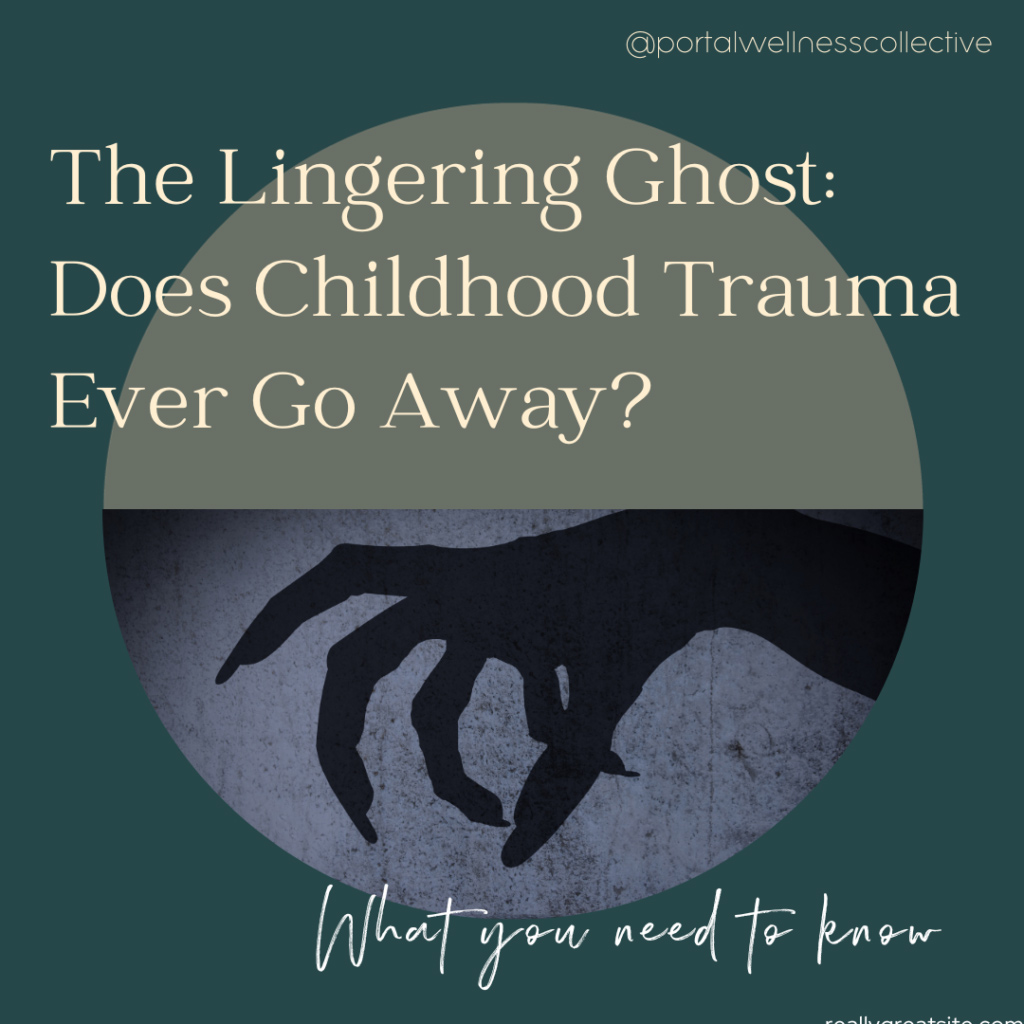The Lingering Ghost: Does Childhood Trauma Ever Go Away?
Childhood trauma leaves an indelible mark on a person’s life, shaping their experiences, relationships, and emotional well-being. Survivors often wonder if the pain of childhood trauma will ever fade away completely. In this blog post, we will explore the question, “Does childhood trauma go away?” We will discuss the long-term effects of childhood trauma, the potential for healing, and the importance of seeking support in navigating the journey towards recovery.

1. Long-Term Effects of Childhood Trauma:
Childhood trauma can have long-lasting effects that persist into adulthood. Emotional and psychological consequences, such as anxiety, depression, and post-traumatic stress disorder (PTSD), may continue to impact survivors. Additionally, unresolved trauma can influence coping mechanisms, relationships, and overall quality of life. You can read about this impact and ACE’s (Adverse Childhood Experiences) here.
Ultimately experiencing childhood trauma impacts us globally. It can replace our “connection” mechanisms with “protection” mechanisms. Everything from how our brains get wired, our nervous system, health outcomes, world view, identity and relationships are impacted. This may sound bleak, but it is possible to heal and resolve this trauma and find peace.
2. The Journey of Healing:
While childhood trauma may never completely vanish from one’s memory, the journey of healing can bring significant relief and growth. Healing is not about erasing the past but rather learning to integrate traumatic experiences into one’s life in a way that fosters resilience, self-compassion, purpose, fulfillment and joy. It is WORTH IT, I promise. It does not just impact you either, healing your trauma and making a choice to break the cycles of traumatic family systems, and societal systems helps you but also helps others as well.
You can read what to expect in your trauma healing journey here as well as what NOT to do when trying to heal trauma here.

3. Seeking Professional Support:
Professional support, such as trauma-informed therapy or counseling, plays a pivotal role in the healing process. Therapists can provide survivors with tools to cope with trauma triggers, process painful memories, and develop healthier coping mechanisms. Trauma therapy is not just about recovering from PTSD, but also about reclaiming your life, identity and relationships. If this is something you would like guidance and support with, check out our trauma therapists! We would be honored to guide you in this endeavor.
4. Building Resilience:
Healing from childhood trauma involves building resilience – the ability to bounce back from adversity and grow stronger. By engaging in community care, somatic practices, self-compassion, and interpersonal skills survivors can cultivate resilience, helping them navigate life’s challenges with greater ease.
5. The Impact of Self-Awareness:
Self-awareness is a crucial aspect of healing from childhood trauma. Acknowledging the impact of trauma and recognizing its influence on thoughts, emotions, and behaviors empowers survivors to make conscious choices and create positive changes in their lives. Self awareness also helps us take accountability for ways we project our trauma on ourselves and others, combine this with self compassion and we can begin to respond differently to triggers, move forward and heal.
Read more about the importance of self awareness and its impact here.
6. Breaking the Silence:
Many survivors of childhood trauma find solace in breaking the silence and sharing their experiences with trusted individuals or support groups. Connecting with others who have undergone similar challenges can validate their feelings and provide a sense of belonging.
There are some things we have to heal individually, and there are some things we just have to heal in community. Our trauma often happened in relationship or was exacerbated by experiences in community with others, this is why engaging in healthy community and working through what comes up is essential to healing from trauma. You can read more about group therapy here.
7. Embracing the Journey:
The process of healing from childhood trauma is unique for each individual, and there is no set timeline for recovery. It is essential for survivors to be patient with themselves, embracing the ups and downs of the healing journey while celebrating progress, no matter how small.
Healing from trauma often looks like a spiral, instead of climbing a mountain. Go easy on yourself, and know there will be ups and downs, and seasons to this journey. Read more about preparing to heal from childhood trauma here.

Conclusion:
Childhood trauma leaves an indelible imprint on a person’s life, and its impact may continue to be felt throughout adulthood. However, with the right support, healing is possible. While childhood trauma may never completely go away, survivors can find solace in the journey of healing and recovery. By seeking professional help, building resilience, and embracing self-compassion, survivors can find hope and reclaim agency in their lives, moving towards a brighter and more empowered future.
If you or a loved one needs support healing from trauma, please reach out to us! This journey is not meant to be done alone.


